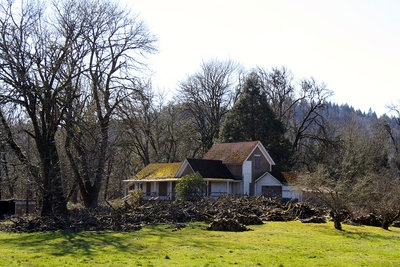
April 26 through May 2 is National Preservation Week and most people don’t really know about it. We do appreciate the historic places around us. We can appreciate buildings from an earlier age for their quality of construction and materials, their remarkable and memorable shape and form or for what might have occurred behind their doors. Sometimes those buildings sit in the landscape, isolated and unique. Sometimes they’re found together in neighborhoods, or the several neighborhoods that make up a town. Each of these, when held in our memory, tells us the story of where we are and why we’re here.
Springfield’s story can be told through its buildings, places and neighborhoods, and much of it can be easily seen or visited. A fun excursion to consider might go from the shops along Main Street, between Pioneer Parkway East and 7th Street, up through the historic Washburne Neighborhood which, along with Willamette Heights, made up all of Springfield until 1940. While downtown, pause and look at the buildings. Pop into the Springfield Historical Museum or the Chamber of Commerce office in the old, Victorian-era Passenger Train Station, to take in some local history. Both have been listed in the National Register of Historic Places. When you do that, think about how you would feel if those places weren’t here.
Not all of Springfield’s historic places are downtown or are urban. Dorris Ranch is a popular place for dogs, bikes, picnics and family photos, but it is also a National Register Historic District. This would be a great time to walk through Dorris Ranch Park. The first house on the ranch, the old Thurston-Briggs House from the early 1870s, sits boarded up, overlooking the park entrance. This house is one of the five oldest standing structures in the city. It was almost used for a controlled burn a few years ago. Also at Dorris Ranch, there is the 1910 Queen Anne Classical-Revival Tomseth House, moved to the park in the 1980s when it faced bulldozers because its Willamette Heights site was redeveloped for business.
The actual Dorris House, an 1899 Queen Anne Greek Revival building, is hidden in the filbert grove down a winding driveway deep in the park, its old gardens lost to time. On Aspen Street, west of Kelly Butte, there’s the Robert E. Campbell home, also one of Springfield’s five oldest standing structures. Built in 1870, it’s a fine example of the type of house you’d expect to find on a successful Late-Victorian Era farm. It has also been listed on the National Register of Historic Places. Much of Springfield’s development is suburban, those places in-between the urban and the rural. In Thurston there’s the Grange building that is designated as a local landmark. It’s not only a reminder of quieter times on Thurston Road before the development and population boom of the postwar 20th century, but it is a familiar landmark that helps to orient us in the city both geographically and historically.
History is a living thing that is always growing and changing. Since 1966, when the National Historic Preservation Act was put into effect, preservationists and other citizens have begun to appreciate more recent historic periods that are more familiar to many of us. It will be 50 years since that law was written, and now a building that was put up in 1965 is eligible for consideration as a historic structure. You might be living in a historic house and not realize it! History isn’t just horse-and-buggies and carriage houses; nowadays, it’s also garages, freeways and shopping malls. No one can anticipate what might survive into the future’s past — to become the objects of tomorrow’s preservation efforts.
There are many social and economic benefits that come from the preservation of established places and the re-use of older buildings. Natural and green places like forests, fields and waterways are no longer pressured to be developed and can become civic assets, as seen in the redevelopment of the Millrace and the expansion of bike lanes along the Willamette River south of the city. Demolition and landfill costs have skyrocketed, making the reuse of old buildings more feasible than tearing them down and starting over with something new. Old downtowns are considered the most desirable locations for retail and commercial development because they are already understood by folks as familiar, accommodating, comfortable and authentic places to spend time and money. Historic enclaves become incubators of new business and lifestyle models. The old buildings and places that survive have become the landmarks of the community. They give us a sense of place, that “hometown feeling” that we love so much in Springfield. Transportation systems and services, already concentrated around the older center of town, require fewer parking spots and have less transit cost per rider due to easier access to community services. So-called “alternative” modes of transportation (walking and cycling) become more sustainable when travel destinations are closer and attractive.
These are the “no-brainer” benefits that come about when preservation is considered an essential tool in the urban growth and development toolbox, but it can bring to the community so much more when coordinated with larger, long-term goals. Preservation is a real-time investment in the future of the community. Let me put that differently: Preservation is a real-time investment in the future of the community. Excepting a minority of governmental and institutional employees, the vast majority of preservationists are amateurs and volunteers. This is certainly true in Springfield! Everyday folks are the ones who are invested in a place. They are the ones who know the story. These people are you.